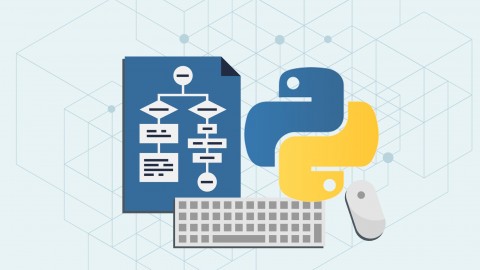
What you'll learn
- Understand arrays and linked lists
- Understand stacks and queues
- Understand the differences between data structures and abstract data types
- Understand tree like data structures (binary search trees)
- Understand balances trees (AVL trees and red-black trees)
- Understand graph traversing (BFS and DFS)
- Understand shortest path algorithms such as Dijkstra's approach
- Understand minimum spanning trees
- Be able to develop your own algorithms
- Have a good grasp of algorithmic thinking
- Be able to detect and correct inefficient code snippets
- Python basics
- Some theoretical background ( big O notation )
This course is about data structures, algorithms and graphs. We are going to implement the problems in Python programming language. I highly recommend typing out these data structures and algorithms several times on your own in order to get a good grasp of it.
So what are you going to learn in this course?
Section 1:
- setting up the environment
- differences between data structures and abstract data types
- what is an array data structure
- arrays related interview questions
- linked list data structure and its implementation
- stacks and queues
- stacks and queues related interview questions
- what are binary search trees
- practical applications of binary search trees
- problems with binary trees
- balanced trees: AVL trees and red-black trees
- what are heaps
- heapsort algorithm overview
- associative arrays and dictionaries
- how to achieve O(1) constant running time with hashing
- ternary search trees as associative arrays
- basic graph algorithms
- breadth-first and depth-first search
- shortest path algorithms
- Dijkstra's algroithm
- Bellman-Ford algorithm
- what are spanning trees
- what is the union-find data structure and how to use it
- Kruskal's algorithm theory and implementation as well
- sorting algorithms
- bubble sort, selection sort and insertion sort
- quicksort and merge sort
- non-comparison based sorting algorithms
- counting sort and radix sort
In each chapter I am going to talk about the theoretical background of each algorithm or data structure, then we are going to write the code step by step in Python.
Most of the advanced algorithms relies heavily on these topics so it is definitely worth understanding the basics. These principles can be used in several fields: in investment banking, artificial intelligence or electronic trading algorithms on the stock market. Research institutes use Python as a programming language in the main: there are a lot of library available for the public from machine learning to complex networks.
Thanks for joining the course, let's get started!
Who this course is for:
- Beginner Python developers curious about graphs, algorithms and data structures

![[Learning Path] Become a Spring Developer](https://i.postimg.cc/CxR9ZY3M/image.jpg)
![[Learning Path] Learn CSS](https://i.postimg.cc/9QBw75ZS/image.jpg)